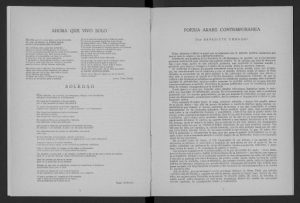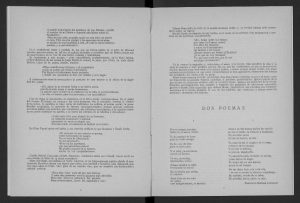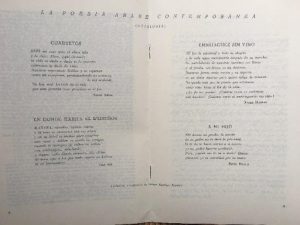Itzea Goikolea-Amiano is a Post-Doctoral Research Fellow working on the Multilingual Locals, Significant Geographies (MULOSIGE) project.
Contemporary Arabic Poetry: Anthologies, New Writers and Perspectives
Modern and especially avant-garde Arabic literature from the Mashreq (Middle East) and the Mahjar (Arab American diaspora) came to occupy a central position in Al-Motamid and Ketama. One of the main aims of the journals became to make contemporary Arabic poetry known among their Hispanophone readers. As a consequence, contemporary Arabic poetry entered the realm of Spanish Arabism, which had until then almost exclusively been focused on al-Andalus and Andalusi history – an orientation which the early issues of Al-Motamid attest very well.
Shuwaqi’s, al-Sabbagh’s and Martínez Martín’s efforts were pivotal in positioning contemporary Arabic poetry at the centre of both journals’ interest. Ketama, more than Al-Motamid, privileged Mahjari literature which, in the words of Waïl Hassan (2017: 59), was “a minor literature that revolutionized modern Arabic poetry”.
The fact that these colonial journals produced a larger volume of translations of Arabic into Spanish than the other way round also challenges customary understanding of colonial culture as systematically excluding the colonised and their production, and of literary translation moving from the literary “centre” to the “periphery” (Orsini 2002) and from “more endowed” to “less endowed” languages and literatures (Sapiro 2011).






